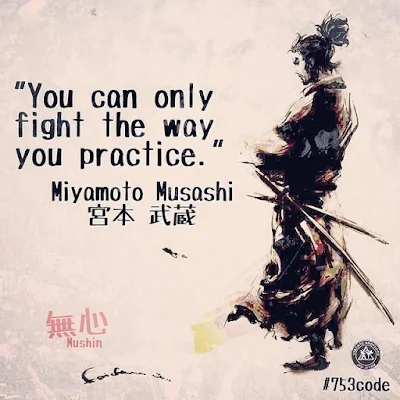For a Managing Director or Chief Executive Officer, knowing where your business sits within its market is an important first step in leading it to where it needs to be. Where you are today is the result of action taken years before. For leaders' determining where they want their business to be is about deciding where a business is best positioned to succeed within its market over the leaderships tenure.
Strategic Brand Positioning
That conversation of where to be (and where not to be) requires careful consultation with the shareholders, and key stakeholders as well as the people within the business. What are their aspirations for the business today and over what horizon? If a business is a mid-market player within a sector then is everyone happy to stay there and defend their market position and market share, or do they want to move to somewhere else? Pressure mounts as other players within the market accelerate their growth by moving to other areas of the market. Staying where you are needs to be defended, then the leadership team must be able to defend these strategic decisions.
That desire to shift should be based not just on a simple aspiration, or the selection of a new MD / CEO to move the brand, but on key factors which will include growth potential within segments of that sector, short-term opportunity analysis of moving compared to staying where you are as well as long-term goals including profitability and sustainability over the a long-term strategic and team culture goals.
Leaders' Biggest Decision
Moving position is not about dropping what you currently do, unless that is redundant within the market, but more about where will the business will be over time. Deciding where make prioritisation of future investments and place resources, including your energy is how businesses naturally migrate. Dramatic events such as Covid where businesses have to overnight pivot their model is the most often need to make complete shifts. Traditional change models are often driven by macro market drivers, (PESTLE) factors most of which are driven in response to consumer demand, reflecting changing preferences or within markets by changing dynamics of a market.
The big decision for an MD / CEO is where to go from where you are today. That decision starts by answering why where you are today not where you want or need to be tomorrow. For a new leadership team moving the company's position is the reason they have been brought in as shareholders are not happy with the current position in terms of profits, ROI or sustainability. Deciding where to go requires some deep sole searching as well as emerging market opportunities from existing key customers but also in where and what impact emerging trends will make on the business. Dealing with the conflicting pulls and pushes of advice as to where to go, requires detailed analysis and evidence building, so as not to be pulled from pillar to post in strategic thought.
Leading ahead of the curve, or behind the curve.
Moving a business requires a thought process of where is that business sitting today within its market. Is the business ahead or behind the curve? Is the first and most important question to answer. The gulf between the two is a huge chasm, are you a brand leader or a sector follower.
What is the curve?
The curve is where a company/brand sits within a market. Any and every market are structured around the technology levels within them. From cars to computers, fashion to furniture, to energy to engineering every sector has its own defined structure. The curve is how customers see a market, and how customers engage with brands along that curve. In effect the curve shows where customers are by their buying behaviour, what they will spend based upon their value perception of each brand. It's why Rolex and Tag Heuer can charge more than Swatch and Timex. Those ahead of the curve invest more in research and their product across their marketing mix than those behind the curve.
This understanding of a market is a strategic issue for leader's to assess, understand and determine where and how they position their company to develop their long-term success. Where to position a company for long-term success is fundamental to the business's success. Where you sit within a market provides you with a place to defend and an according accessible market presence, it is easy to use an existing cash cow to sell more downstream, it is harder to reposition yourself upstream with a new product as the brand perception is outside comfort or competency The danger of growing using just cash cows is that it naturally slips the brand down the curve, a dangerous precedent which is hard to stop or reverse.
Strategic Curve Positioning
This structure, the normal distribution curve is a line along which every player in the market is mapped by perception as to where they sit. At the far left are the innovators, small technical product/service creators at the cutting edge of the market who develop bespoke new products. While there are always very few of these players (in a mature market) they are vital as the develop the new and innovative products and services the sector is known for. To do this they require the right mix of talent, creative space to succeed and deep pockets to support their innovation development. That makes them small players but with disproportionally big brand presences and are often funding (owned or in Joint Ventures with main stream players).
As the curve increases businesses are seen as early adopters, where higher growth companies sit who have developed sufficient market size to stand alone, and who quickly adopt ideas form innovators and take it to the mainstream market. for many people these flagship companies are what determines a market as they reflect the innovation but in a larger scale than then the pure innovators. Typically good at marketing and sales as well as product development these companies can premium price their products and services to the discerning customer who buys the pure value proposition that early adaptors offer.
Early majority companies, play in the mainstream, safe, established with a wider value proposition than the product they bring innovation in once proved. By being a mainstream player the brand USP and value proposition has to be clearer across the entire marketing mix and unlike the earlier sections a wider skillset of people are needed who can identify trends and develop them into the mass market position early on in which those companies operate.
Late majority companies gather trends and repackage them with lower priced versions of that trend, but bring it to new audiences with enhanced convenience, more support and rely upon mass acceptance using a wide range of marketing mix techniques suitable to their sector.
At the tail end of any sector are the laggards, players in the market who hoover up trends that are now past, but have some lower price or new laggard customer segments who they can resell these products too. Laggard markets can be extremely successful where they extend lifespans of trends to keep them alive by repackaging them to wider, often high value alternative markets.
Why being ahead of behind the curve matters
Where a new or existing customer, sits on its sector curve is a core strategic issue. A company must play it its competitive advantage, and shifting that takes time and resources to achieve. The gulf between the front of the curve, the innovators compared to the laggards is huge. Players within the same sector but at significantly different market positions are almost speaking foreign languages to each other and certainly very different cultures.
Innovator and early adopters will more heavily invested in new products and services while those behind the curve invest significantly less, sometimes very little in products and services. This reflect sin visual differences in the relative prices they can charge for their comparable products and the timeline with which they bring bring their respective products to market.
That investment in new products require high investment which is offset by higher profit margins to premium customers, while those further down the curve have to offset lower gross margins with lower costs in product development coupled with larger market segments increasing sales volume and therefore lower costs to come to market. Choosing where to sit
Strategic Sustainability
Choosing where to position your company is therefore a vital strategic decision to take. The key criteria of a long-term strategic view is essential, where does the company want to compete over the next 5 years, not just to capitalise on next years' opportunity. It takes time, even in agile companies to orientate, become established and achieve positive ROI's and develop a sustainable position within a market.
This means that strategic positioning defines a leadership's success or failure. Picking the right strategic position is the biggest single decision which a leadership team has to undertake, it will determine what your business future looks like, determining your business model through to defining your long-term success.
Getting your strategy right.
Strategic planning is the most reliable way to develop a sustainable and successful market position. Evaluating all options, stakeholder and shareholder needs aligned to the current and future market opportunities and risks. It also focuses leaders on setting their goals and aspirations in context with those key factors aligning the whole business with a focus and shared direction to take.
For leaders to lead they must be going someone and that requires them to make the big decisions, but make them strategically not tactically.
























